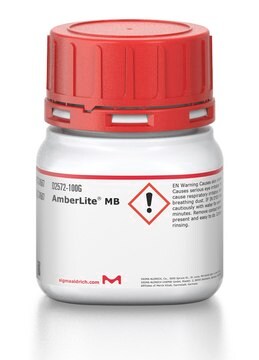Kluczowe dokumenty
283088
4-Methoxybenzenediazonium tetrafluoroborate
98%
Synonim(y):
4-Methoxyphenyldiazonium tetrafluoroborate, p-Anisyldiazonium tetrafluoroborate, p-Methoxybenzenediazonium fluoborate (6CI), p-Methoxybenzenediazonium fluoroborate, p-Methoxybenzenediazonium tetrafluoroborate (7CI), p-Methoxybenzenediazonium tetrafluoroborate(1-), p-Methoxyphenyldiazonium tetrafluoroborate
About This Item
Polecane produkty
Poziom jakości
Próba
98%
Formularz
solid
mp
142-144 °C (lit.)
temp. przechowywania
−20°C
ciąg SMILES
F[B-](F)(F)F.COc1ccc(cc1)[N+]#N
InChI
1S/C7H7N2O.BF4/c1-10-7-4-2-6(9-8)3-5-7;2-1(3,4)5/h2-5H,1H3;/q+1;-1
Klucz InChI
BYGWNWAFXUPZHI-UHFFFAOYSA-N
Szukasz podobnych produktów? Odwiedź Przewodnik dotyczący porównywania produktów
Powiązane kategorie
Opis ogólny
Zastosowanie
Hasło ostrzegawcze
Danger
Zwroty wskazujące rodzaj zagrożenia
Zwroty wskazujące środki ostrożności
Klasyfikacja zagrożeń
Eye Dam. 1 - Skin Corr. 1B
Kod klasy składowania
8A - Combustible corrosive hazardous materials
Klasa zagrożenia wodnego (WGK)
WGK 3
Temperatura zapłonu (°F)
Not applicable
Temperatura zapłonu (°C)
Not applicable
Środki ochrony indywidualnej
Eyeshields, Faceshields, Gloves, type P3 (EN 143) respirator cartridges
Wybierz jedną z najnowszych wersji:
Masz już ten produkt?
Dokumenty związane z niedawno zakupionymi produktami zostały zamieszczone w Bibliotece dokumentów.
Nasz zespół naukowców ma doświadczenie we wszystkich obszarach badań, w tym w naukach przyrodniczych, materiałoznawstwie, syntezie chemicznej, chromatografii, analityce i wielu innych dziedzinach.
Skontaktuj się z zespołem ds. pomocy technicznej









